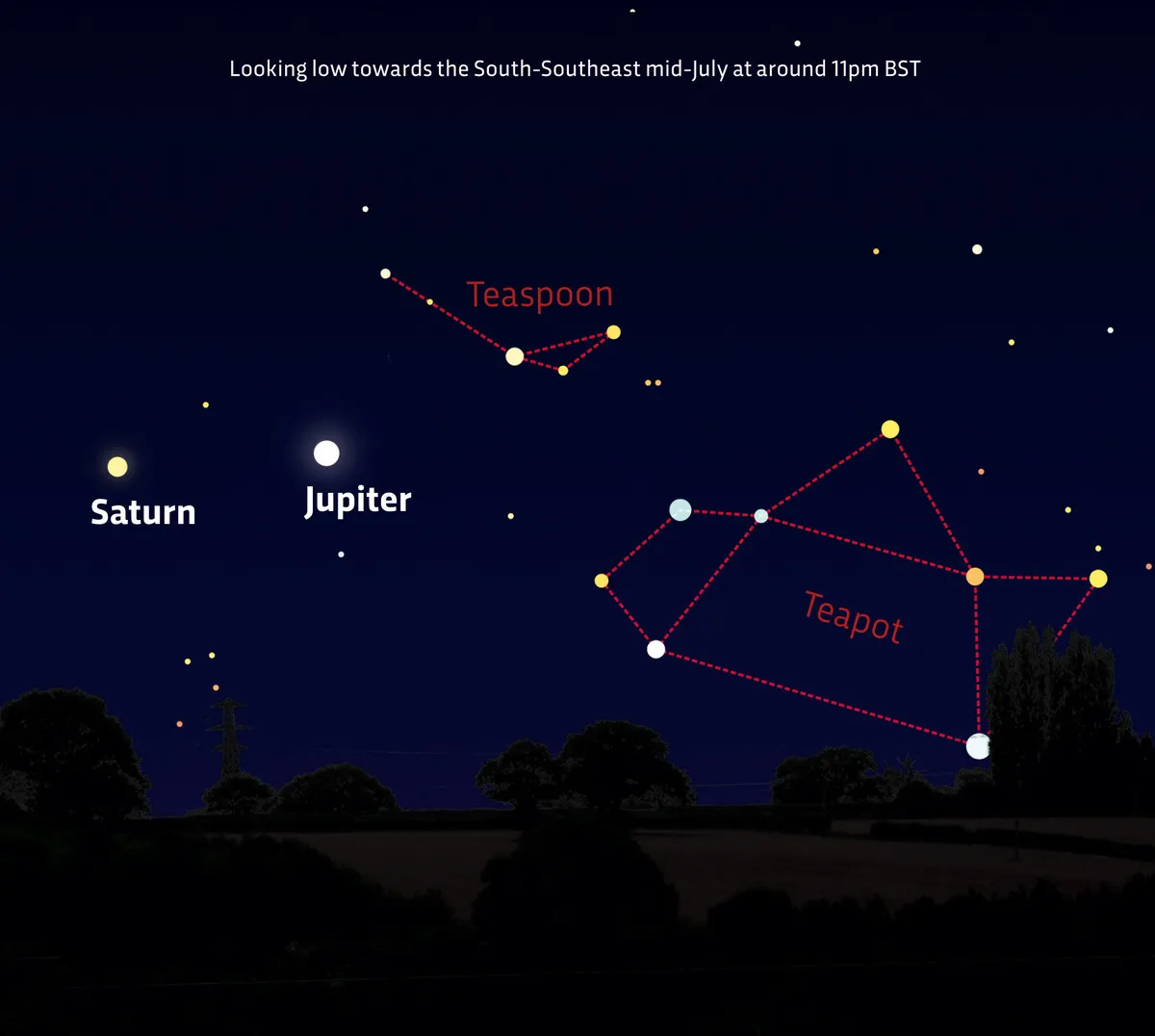In some ways, summer stargazing is great because of the warmer nights. But the shorter nights mean that there’s a much smaller window of darkness. That’s why it’s a great time to look for the brighter objects in the sky, like planets, which are still visible even when it’s not fully dark.
This July offers the perfect opportunity to spot two of the ‘naked eye’ planets: Jupiter and Saturn. That’s because the Earth’s orbit will bring it directly between these planets and the Sun. When this happens, a planet is said to be ‘in opposition’. It is the closest the planet will come to Earth – and is therefore the brightest we will see it in our night sky. Jupiter is in opposition on 14 July, while Saturn is on 20 July.

You’ll be able to see Jupiter and Saturn throughout July, close together in the sky, with both rising on the southeastern horizon. At the start of the month, you’ll see them rise just after 23:00 BST, Jupiter appearing first (it will be the brightest ‘star’ you can see on the horizon). By 23:30, Saturn will be visible to the left of Jupiter, looking a little less bright.
As the days go on, the pair will rise earlier, and by mid-July, they’ll be visible by 22:00. Two fun star patterns (‘asterisms’) to look out for close to the planets are the Teapot and the Teaspoon (see diagram above).
If you have a pair of binoculars, try and spot Jupiter’s four largest moons: Io, Callisto, Ganymede and Europa. How many you’ll be able to see, and where you’ll see them, will vary depending on the night. But on 6 July, the four moons will appear in a line, visible as two tiny ‘stars’ on either side of Jupiter. You can use free stargazing software such as Stellarium to check what you’ll be able to see on a specific night.
Read more:
- How do I find the Summer Triangle this month?
- How do I find the North Star?
- How do I watch tonight’s Lyrid meteor display?

